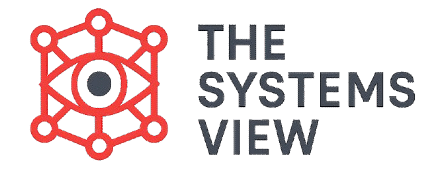Kenneth Boulding was far more than an economist. He was one of the most broad-minded and diverse thinkers of the 20th century. Boulding was a poet, a founder of peace studies, and a major architect of General Systems Theory (GST). He helped organize the system ideas started by Ludwig von Bertalanffy.
Boulding’s work focused on connecting different fields of knowledge. He believed that systems concepts could be used to understand everything from a cell to a global economy. His most famous contribution to GST is his idea of the systems hierarchy. This structure provides a map for thinking about the complexity of the world. He dedicated his life to using science to serve humanity.
Founder of the Systems Movement
Kenneth Boulding was a key player in turning GST into an organized field of study. His background was in economics, where he criticized the old, mechanistic view of the economy. He wanted to replace the idea of equilibrium with a more dynamic, open system perspective.
Founding the SGSR
In 1954, Boulding was at the Centre for Advanced Study in the Behavioural Sciences. He met with Ludwig von Bertalanffy and other thinkers. This meeting led directly to the founding of the Society for General Systems Research (SGSR) in 1956. Boulding became the Society’s president for its first two years.
The SGSR had two core goals:
- To redefine science by crossing the boundaries between disciplines.
- To place science in the service of society.
Kenneth Boulding was a co-founder of the Society for General Systems Research (SGSR) and played a crucial role in giving General Systems Theory a formal structure. He emphasized that the goal of the movement was to unify science and apply systemic principles to serve humanity.
Hierarchy of Systems
Boulding’s most significant contribution was his concept of the systems hierarchy. This framework provides nine different levels of systems. He suggested that systems at a lower level could be seen as subsystems inside a higher level.
This arrangement helps thinkers compare complexity across different subjects. For example, the rules that govern a simple machine are different from the rules that govern a human society.
Boulding’s Nine Levels of Systems
Boulding identified the nine levels in order of increasing complexity:
- Frameworks (Static Structure): This is the level of geography and anatomy. It describes the patterns and arrangement of things, like the arrangement of atoms in a crystal or a map of the Earth.
- Clockworks (Simple Dynamic System): This level includes systems with fixed, necessary motions, like the solar system or simple machines.
- The Thermostat (Control Mechanism): This is the cybernetic system where information and feedback are essential. It maintains a set equilibrium, like a thermostat.
- The Cell (Open System): This is where life begins. It is the level of the open system that maintains its structure by continuously exchanging matter with its environment (ingestion and excretion).
- The Plant (Genetic-Societal System): The system is divided by a clear difference between the genotype (the core structure) and the phenotype (the observed system).
- The Animal (Zoo-System): This system has specialized sense organs, a brain, and a nervous system. It allows the animal to process information and learn.
- The Human (Man-System): This is the animal system combined with self-consciousness. The human possesses language, symbols, and an image of the self.
- Social Organizations (Socio-System): This level includes human roles, channels of communication, and shared values.
- Transcendental Systems: This is the level of the ultimate and absolute. It deals with the knowledge that we do not know.
The Power of “The Image”
Boulding’s book The Image introduced a new perspective to systems thinking called phenomenology. This idea states that all our experiences of the world are filtered through our mental understanding.
Boulding argued that there are no absolute “facts“. There are only messages that are filtered through a person’s values and mental image. This focus on the observer’s mind later had a great impact on the development of soft systems thinking. It showed that a system is defined not just by its parts, but by how we choose to look at it.
Conclusion
Kenneth Boulding was an economic visionary and a unifying force for the systems movement. By creating the hierarchy of systems, he gave thinkers a structure to compare complexity across all disciplines. Through his work on The Image, he highlighted the critical role of the observer’s perspective in defining any system. Boulding’s contributions were essential in developing GST from a biological idea into a universal framework for science and society.


